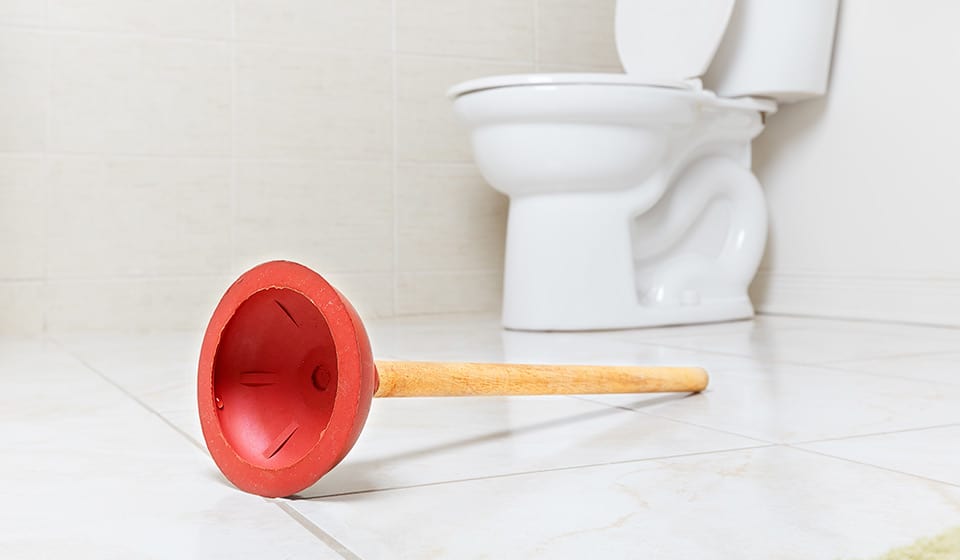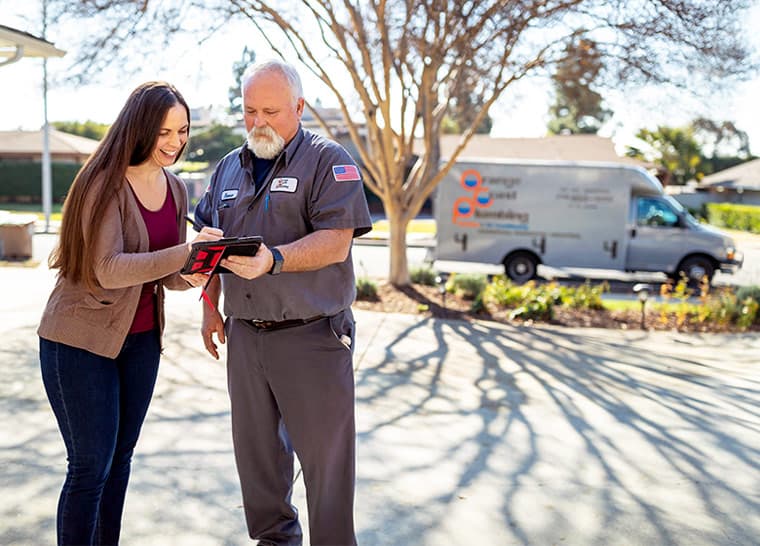A plunger is a plunger, right?
Blasphemy to the ears of a plumber! That’s like telling a violinist all classical music sounds the same or a winemaker that all pinots are alike.
So let’s set the record straight: a plunger is a plunger by definition, but each plunger type is different. Each plunger design has different uses.
No doubt you have a plunger or two at home, and you may wonder if you selected the right type for the toilet, the sink, or whatever job is at hand.
Let’s look into it.
The Humble Cup Plunger: Best for Sinks
When you hear the word “plunger,” this is the type that comes to mind. Cup plungers are the oldest kind — a heavy rubber cup with a wooden handle (or maybe plastic).
Your grandfather had one, your father, and now you. Cup plungers are a legacy like watches passed down from generation to generation.
And they still work fantastically well for some jobs, like clearing the sink or bathtub drain. They don’t work well for toilet clogs — at all.
Cup plungers need a relatively flat surface, like the surface of a tub or sink. They flounder on the tricky curved geometry of a toilet.
For a toilet clog, use a flange and not a cup.
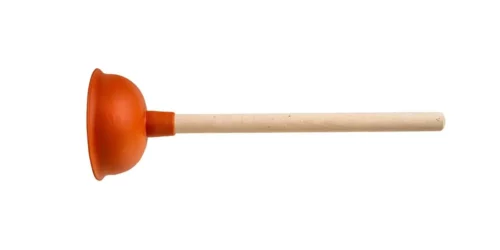
Cup plunger for sinks
The Fancy Schmancy Flange Plunger: Best for Toilets
A flange plunger comes with a soft rubber flap at the end of the cup — like a little skirt underneath. This flap seals around the curvature at the bottom of a toilet bowl, creating suction that forces clogs loose.
Flange plungers are ideal for toilet bowls but not sinks. The skirt offers a poor seal on a flat sink basin, making it a poor choice.
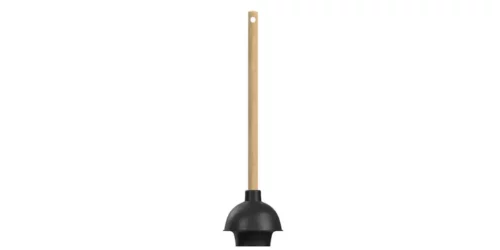
Flange plunger for toilets
The Stylish Accordion Plunger: Extra Power for Toilets
An accordion plunger takes the concept of a flange and improves on it. The accordion-like design makes the vacuum even more powerful, similar to how a bellows pushes air. Only this accordion pushes and pulls water.
Accordion plungers are for toilets only. They can be tricky to use — the accordion fold takes some practice to master. Even Mozart couldn’t learn the accordion in a day (especially because it was patented three decades after his death).
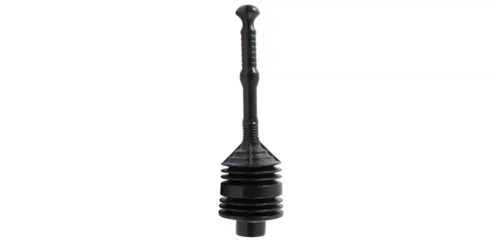
Accordion plunger for toilets
Some Handy Dandy Plunging Tips
- Pick the right plunger for the job (remember, we just discussed this).
- Keep the handle of the plunger straight. If possible, it should be completely vertical.
- Plunge with an up-and-down motion. Other motions won’t generate the suction and force you need.
- Get the air out of the plunger cup. Air will compress with each downward motion, lessening the force. The plunger should fill with water, not air. Add water to a clogged sink if necessary, but be careful with the toilet! Don’t flush and hope for the best, or you could end up with a nasty mess.
- Don’t use toxic chemicals while plunging. It might seem like a good idea — using a drain cleaner means extra drain-clearing power, right? Drain cleaners can damage your pipes. Worse, anytime you plunge, there’s a risk of backsplash. Harsh chemicals could end up on your skin or in your eyes. Do not do this!
- Replace an old or damaged plunger. Any tears or cracks in the cup will compromise the seal, and render it ineffective.
Naturally, a plunger can’t correct every clog. At some point, you may have to call in the heavy artillery of a plumber equipped with snakes, hydro jets, and other tools.
Simple Rules to Prevent Toilet Clogs
- Never put anything other than human waste and toilet paper down the drain. This includes wipes, cotton swabs, feminine hygiene products, cigarettes, and more.
- Don’t flush too much at once. If your toilet bowl looks like a floating paper lantern festival, you’ve overdone it.
- Ensure your drainage system is in good condition. Schedule regular maintenance and sewer pipe cleaning.
FAQs: More about Plungers
Q: How do I know which type of plunger to use for my clog?
The key is to match the plunger to the fixture you’re dealing with. For sinks or bathtubs, use a cup plunger, which performs well on flat surfaces. If you’re facing a toilet clog in a toilet, opt for a flange or an accordion plunger, whose design accommodates the curved shape of the toilet bowl for better suction.
Q2: What should I do if my plunger isn’t working on a clog?
Verify that you’re using the correct plunger for the job and that you’re plunging correctly—maintaining a straight handle and pumping in an up-and-down motion. If the clog persists, consider adding water to improve suction, or it may be time to call a professional plumber. Some clogs exceed the capabilities of a simple plunger.
Q: Can I use a plunger on a kitchen sink clog?
Yes, a cup plunger works effectively on flat surfaces. Ensure the sink has enough water to cover the plunger’s cup for optimal suction.
Q: What should I do if my toilet overflows while plunging?
Immediately stop plunging and remove the plunger. Close the valve behind the toilet to turn off the water supply and prevent further overflow. Clean up any spills and wait for the toilet to drain before trying again.
Q: How often should I replace my plunger?
Replace your plunger if you notice visible signs of wear and tear, such as cracks or tears in the rubber cup. These can prevent it from forming a proper seal and decrease its effectiveness.
Q: Are there any alternatives to plunging for unclogging drains?
Alternatives for minor clogs include a drain snake, baking soda and vinegar solutions, or a wet/dry vacuum. Persistent clogs may require professional assistance.
Q: Is it safe to use a plunger in a bathtub?
Yes. A cup plunger is suitable for bathtubs, provided there’s enough standing water to create a good seal. Be cautious with any bath additives that may interfere with the plunging process.
Q: Can a plunger damage my plumbing?
When used correctly, no. However, excessive force or incorrect usage, especially with aggressive plungers like accordion plungers, may stress and potentially damage older pipes.
Q: How do I know if the clog is too severe for a plunger?
If you’ve made multiple attempts with no success, or if you notice signs of slow drainage, backups, or multiple fixtures being affected, this may indicate a more serious clog that requires the expertise of a professional plumber.
Q: What should I do if my flange plunger keeps getting stuck?
This may be due to an improper seal or an excessive amount of water in the toilet bowl. Check to ensure that the flange is well positioned, and plunge with less force to free it.

